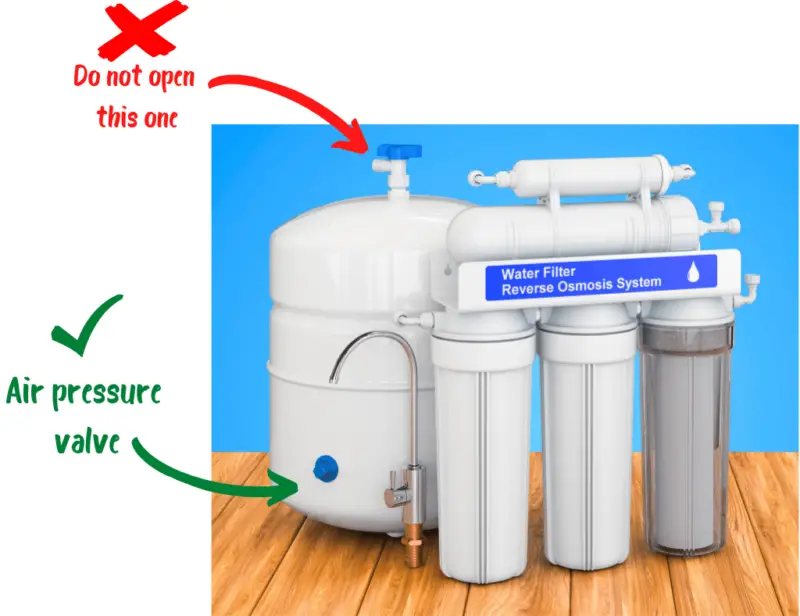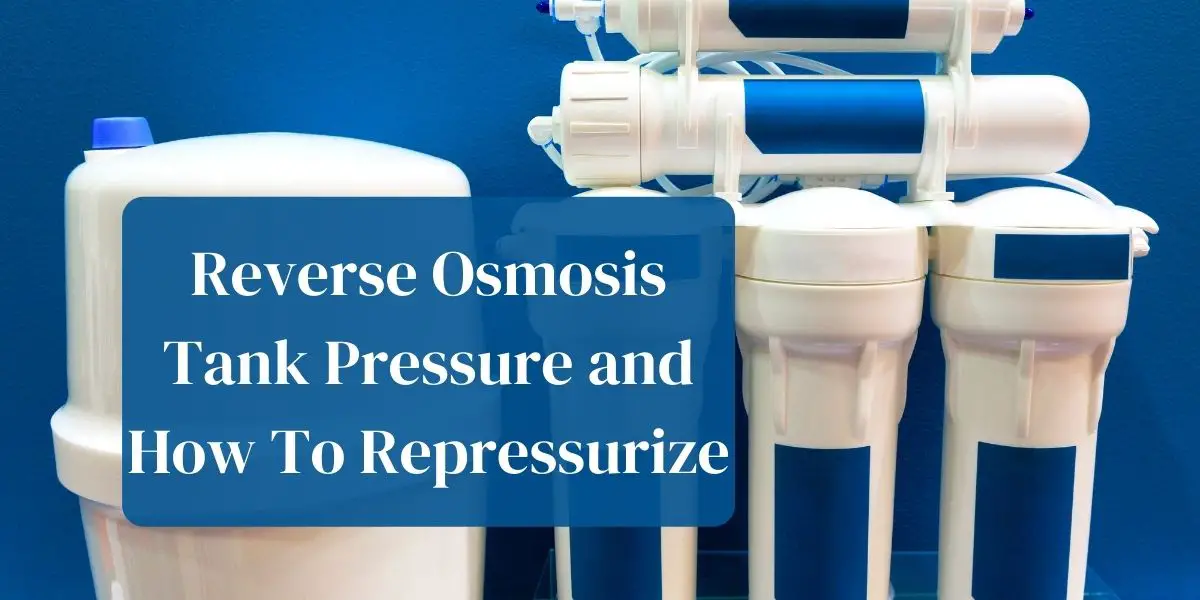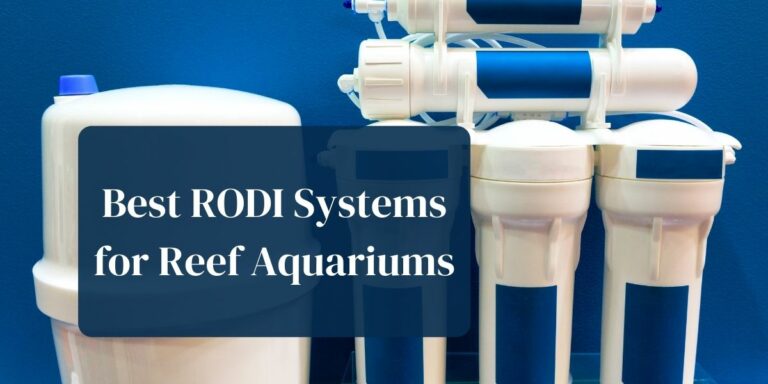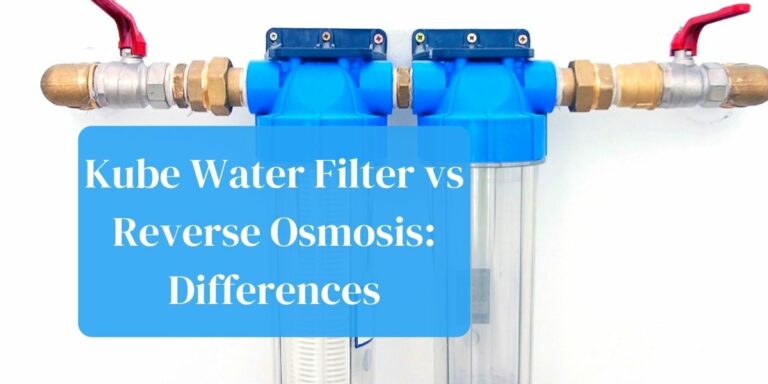If your reverse osmosis system has a water tank in it that’s meant for storing RO water, you need to maintain the proper tank pressure. The pressure directly influences how well your RO system works and performs, and how fast water can flow from it.
In this brief and straightforward guide, you’ll learn how to check the pressure periodically in the tank and re-pressurize it as necessary as a part of regular maintenance.
How to diagnose whether the tank pressure is low
One way to diagnose whether your tank pressure is off or not is when you realize that the water flow from the tank has seriously slowed down, almost to a trickle.
To see if your tank is defective or if it’s just a matter of pressure, try to relieve some pressure from the air valve.
If you see water coming out, then it means your bladder has a hole in it; you need to replace the tank.
However, if there is no water and only air, then it probably means your tank’s air pressure is low, and you just have to re-pressurize it.
How to re-pressurize a reverse osmosis tank
Follow these steps to re-pressurize your RO water tank:
Step 1:
Remove the water supply from your RO system and make sure there is no more water entering it.
Step 2:
Turn on the tap and let the water flow out of the tank until it is empty. You’ll know it’s empty when the water completely stops flowing.
Tip: You don’t need to dump the water – just collect it in a vessel and use it later.
Step 3:
Find the valve stem and remove the covering. Please note that there are two valves – one is the air pressure valve, and the other one goes to the reverse osmosis membrane. Do not remove the valve going to the membrane!
The air pressure valve (“Schrader valve”) usually has a blue cap you have to remove.

Step 4:
Check your tank’s pressure with a PSI gauge. The ideal pressure for an empty tank should be between 6 and 8 PSI for a 2-4 gallon tank.
You can use a simple tire pressure gauge or a digital gauge.
Valve-Loc Pencil Tire Pressure Gauge (2-Pack)
AstroAI Digital Tire Pressure Gauge
Step 5:
If the PSI is below 6, use a bicycle pump or an air compressor to pump air back into the valve until the PSI reaches 6-7.
Be mindful not to over-pressurize.
At this point, you may see that some remaining water comes out of the tank. This is okay. Continue adding air pressure until the water stops again, and then check the PSI.
Step 6:
Once the PSI has normalized, close the valve and the water faucet, and let water flow back into your tank from the membrane.
How reverse osmosis tanks work
RO pressure tanks have two compartments inside them: a water compartment and an air compartment. The air compartment is pressurized and as you open the tap, the air pushes on the water, and it flows out through the tap.
Like we mentioned above, an empty RO tank has pressure of 6 to 8 PSI. As water fills up and presses down on the air compartment, the pressure will gradually increase – the increased pressure will then relieve itself as the water flows back out.
Most RO units have an automatic water shutoff that kicks in when the pressure inside the tank reaches 2/3 of the pressure of the water flowing from your main line into the RO system.
If your city water pressure is around 50 PSI, the system will shut off water production when the tank reaches a pressure of 30 or so PSI.
Also read the follow guides about RO maintenance:









I have a 10 gallon tank in the basement that pushes the water up about 12 feet to my RO faucet in my kitchen sink. What should I set the empty tank pressure to? 7 to 11 psi or higher?
Thank you for taking the time to write this.
InStep 6 you said closed the valve but I have three valves I got the water valve that comes in from the water line I got a valve from the filter and I got a valve on top of the tank what is the valve that is so confusing I wish you could be more specific
@Bruce It’s the valve “going nowhere”, just sitting on the outside of the tank with no connection to a line. Mostly, it has a blue cap.
Your welcome. Thanks for leaving a comment.